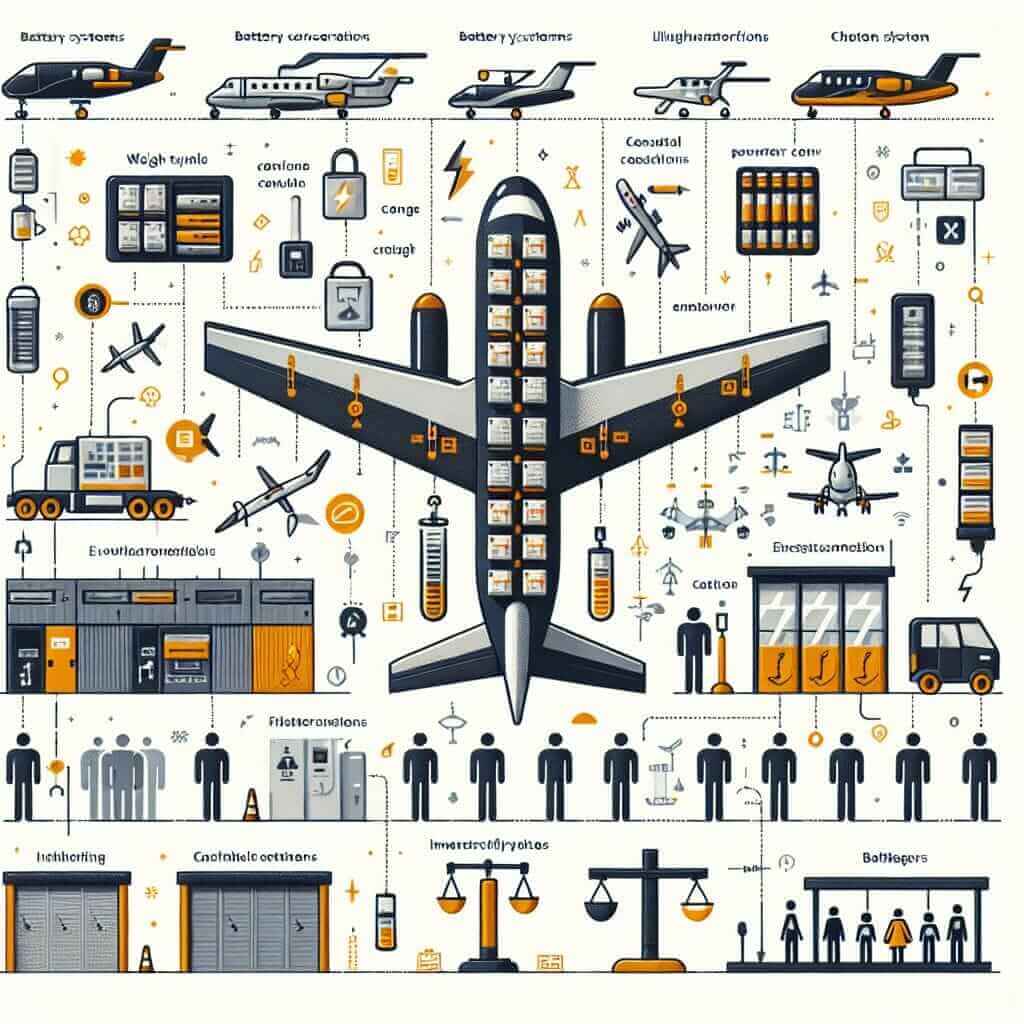The IELTS Reading section tests your ability to understand and interpret texts on a variety of subjects. A popular topic that has piqued the interest of many is the development of electric aircraft—a cutting-edge field with numerous technological and logistical hurdles. This article will delve into the complexity of developing electric aircraft, providing insights into potential exam questions. The topic’s growing relevance may foresee its inclusion in future IELTS tests, making it imperative to familiarize yourself with related vocabulary and concepts.
Full Reading Passage
The Challenges of Developing Electric Aircraft
The aviation industry is on the cusp of a significant transformation, driven by the growing need for sustainable solutions. Electric aircraft, powered by electricity instead of traditional jet fuel, present a promising alternative. However, the journey from concept to commercial reality is fraught with numerous challenges.
Energy Density of Batteries
One of the paramount challenges is the energy density of batteries. Unlike fossil fuels, which pack a high energy punch, current batteries store far less energy per kilogram. This limits the range and utility of electric aircraft. Despite significant advancements in battery technology, the capacity required to power an aircraft for long distances remains a bottleneck.
Weight and Space Constraints
Aircraft design emphasizes minimizing weight and maximizing space for efficiency. However, electric systems, including batteries, are considerably heavier than traditional fuel systems. Integrating these elements without compromising safety or capacity is a daunting task for engineers.
Charging Infrastructure
Another substantial hurdle is the establishment of a robust charging infrastructure. Airports worldwide are equipped to handle traditional refueling operations but lack the facilities for rapid charging of electric aircraft. This infrastructure would need to be developed from the ground up, requiring substantial investment and coordinated effort from stakeholders.
Cost and Economic Feasibility
The initial costs for electric aircraft are exceedingly high. Developing new aircraft designs, manufacturing electric propulsion systems, and setting up the requisite infrastructure invite a hefty price tag. Additionally, the cost of electricity and maintenance may offset some of the operational savings from reduced fuel consumption.
Regulation and Certification
Regulatory bodies must establish and approve new safety and certification standards for electric aircraft. This process is historically lengthy and complex, given that it needs to ensure the highest levels of safety, reliability, and performance. The current certification process for traditional aircraft might not be directly applicable to electric models, necessitating a fresh regulatory approach.
Public Perception and Market Acceptance
Finally, public perception plays a critical role in the adoption of electric aircraft. Despite the plethora of benefits, potential passengers may have reservations regarding safety, reliability, and performance compared to conventional aircraft. Building public trust through extensive testing and transparent communication is critical for market acceptance.
Sample IELTS Reading Questions
Multiple Choice
-
What is one significant challenge mentioned in the text that electric aircraft face?
A. Availability of skilled pilots
B. Energy density of batteries
C. Weather conditions
D. Engine noises -
Why is the weight of electric systems a concern for aircraft designers?
A. They are more difficult to handle.
B. They compromise safety and capacity.
C. They take up too much space.
D. They increase fuel efficiency.
True/False/Not Given
- Traditional aircraft use more space-efficient fuel systems compared to electric aircraft.
- The costs of developing electric aircraft are lower than those for conventional aircraft.
- Public perception does not affect the adoption of electric aircraft.
Matching Information
Match the following challenges with their consequences:
- Weight and Space Constraints
- Charging Infrastructure
- Regulation and Certification
A. Potential passengers may have safety concerns.
B. Infrastructure for rapid charging needs to be developed.
C. Heavier systems compromise aircraft efficiency.
Sentence Completion
- The energy density of batteries is a bottleneck because __.
- Public acceptance of electric aircraft requires __.
Answer Key and Explanations
-
Multiple Choice Answers:
- B. Energy density of batteries
- B. They compromise safety and capacity.
-
True/False/Not Given Answers:
- True
- False
- Not Given
-
Matching Information Answers:
1-C, 2-B, 3-A -
Sentence Completion Answers:
- batteries store far less energy per kilogram.
- extensive testing and transparent communication.
Common Errors
- Misinterpreting Questions: Ensure that you understand the question structure. For instance, in multiple-choice questions, carefully read all options before selecting an answer.
- Overlooking Key Information: Pay close attention to specific details such as numerical values or technical terms.
- Misunderstanding Vocabulary: Be familiar with context-specific vocabulary, as misinterpretations can lead to incorrect answers.
Vocabulary
- Energy Density (noun) – /ˈenərjē ˈdensədē/ – The amount of energy stored in a given system or region of space per unit volume or mass.
- Feasibility (noun) – /ˌfēzəˈbilətē/ – The state or degree of being easily or conveniently done.
- Infrastructure (noun) – /ˈinfrəˌstrək(t)SHər/ – The basic physical and organizational structures needed for the operation of a society or enterprise.
Grammar Focus
- Relative Clauses: Used to provide extra information about a noun, often introduced by who, which, that. For instance: “Infrastructure, which is crucial for rapid charging, requires significant investment.”
- Passive Voice: Often utilized in formal or technical writing to focus on the action rather than the subject. Example: “New safety standards for electric aircraft must be established.”
Conclusion
Success in the IELTS Reading section hinges on your ability to grasp various academic and technical subjects. By understanding the challenges of developing electric aircraft, practicing the proposed questions, and familiarizing yourself with relevant vocabulary and grammar structures, you will be better equipped to tackle similar topics in your IELTS exam.

Final Advice
To excel in the IELTS Reading test, focus on improving your reading speed and comprehension. Regularly practice with diverse passages and question types. Lastly, don’t overlook the importance of expanding your vocabulary and refining your grammar for a more nuanced understanding of complex texts. Good luck with your preparation!